Luccas Toon
- Design Lead
- Art Direction
Creating revenue source for a famous creator
Start year: 2018 • 7 min read
When Youtube changed the monetization rules for kids content, lots of channels cried that their revenue went down considerably. A creator named Luccas Neto, with over 30MM subscribers in his channel, decided to make a dedicated mobile app for his content, in order to diversify the revenue sources. He called us to investigate it and make a project proposal.
But wait, it didn't go that simple.
A bear to be killed, a man to be ruined
 Art by Midjourney
Art by Midjourney
The director of new business came with Luccas Toon as a prospect, telling me this story:
My job is attracting the bear to the cabin where you are, then I push the bear into the cabin, lock the door and run away. Your job is just killing the bear. I can give you a knife if it helps you.
The knife would be only a briefing that the audience is made of kids ranging from 4 to 11 years old, the channel's link and one requirement: the project must have a mix of the Youtube's videos and games.
We had no budget but he wanted me to create a concept to make the creator engage and invest in the project.
I asked myself those kinds of questions: How to mix videos and games? What to create? What should it offer? Any differential?
I felt like I was blind in the dark.
With the bear.
So I started groping the wall.
First step - Getting to know the audience
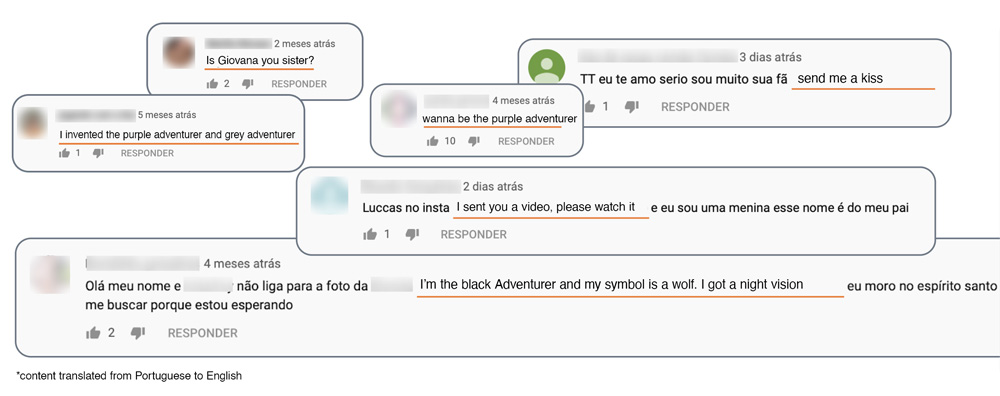
The start was to have a deep analysis of the content and I happened to find precious information on the videos comments, where the fans used to declare their wishes. The most common ones were:
- Closer contact with Luccas
- Have individual attention from the creator
- Know more about Luccas' life
- Be part of "The Adventurers" (one of the various channel's series) - very high level strong evidence here
Then we went straight to the definition of our final user - at the point I could hire the first member of our team, a UX Designer to help me with the tasks. As an app for kids, it should attend two different users:
- Adults (guardians or caregivers) *
- Parental Control
- Safe environment
- Trust
- Kids
- Coming from the YT channel (4-11 years old)
- Lucas products consumption
- Already use games and apps mobile *
*Source: previous researches from other projects and market reports
Declaring the main stakeholders and their requests.
This was a crucial moment. Defining these helped us to make decisions on how the solutions would be done:
- Client
Own a monetization platform - New business director
Must have the youtube videos (to compose monetization with ads) - Developers
Develop it all in Unity (portable to several platforms) - Guardians
Safe environment and experience personalization - Kids
Beginning alphabetization, different capacities
Ideation
Some workshops, like "WPI" and "Crazy 8", with collaborators from other areas, in order to generate ideas that would help to solve the stated problems.

There was a screening and votation for the ideas more aligned to appropriate apps and games for kids.
Benchmarking
Similar apps and games to help visualize the solutions. Here I pulled up an Assistant Designer from another project to help the UX Designer with the research.
"Video call" from Luccas Neto
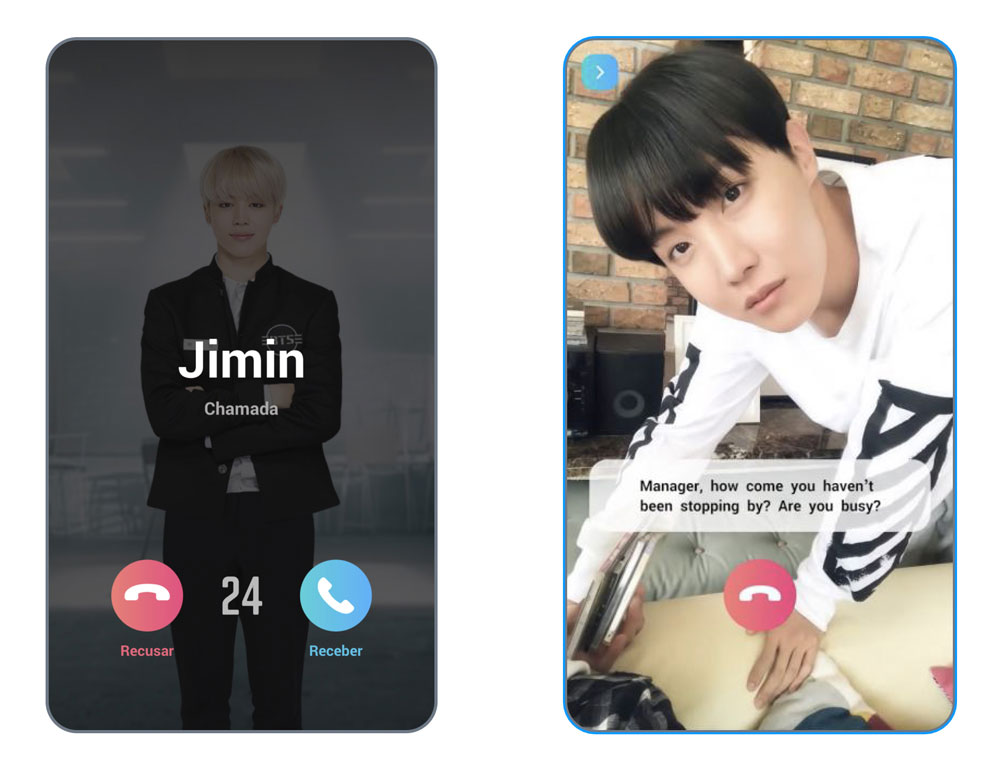
App BTS World (Netmarble)
- App simulates the call interface, as if the idol were talking directly to the child.
- Luccas already has a language that interacts directly with little ones in his YouTube videos.
Find avatar and games in the universe created by Luccas Neto
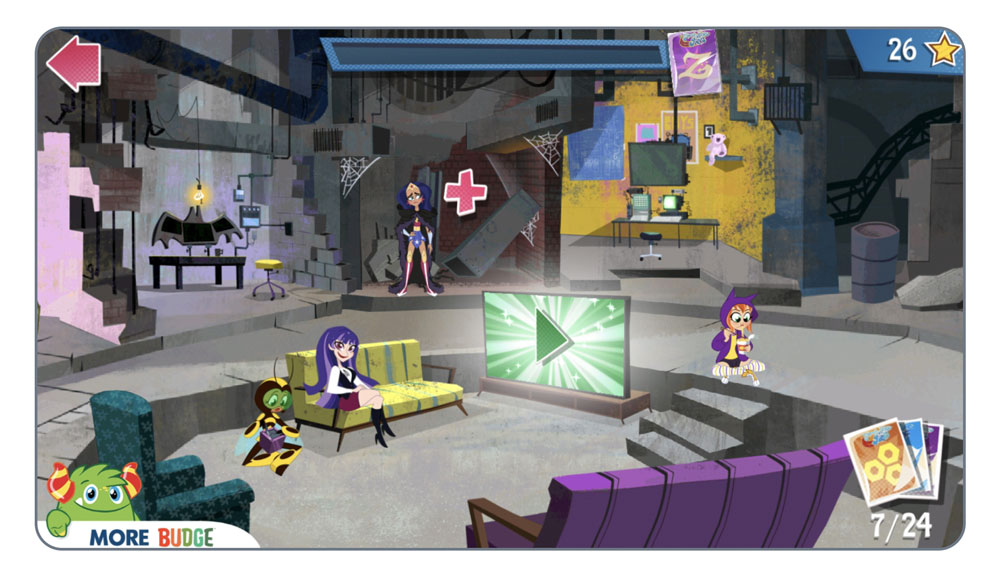
DC Super Hero Girls Blitz (Budge)
- Immersion in a world of adventures: should have game look in all parts of the app, including when navigating through sections.
- Explore an infinite scenario, leaving room open for future upgrades and special decorations acquired through achievements/easter eggs.
The Adventurers avatar customization
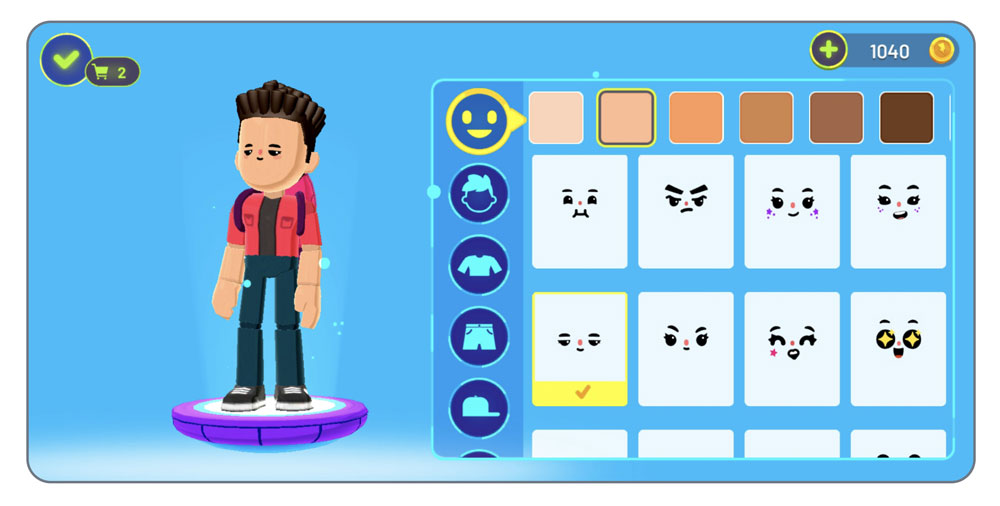
PK XD (Playkids)
- The avatar can have a thousand and one utilities within the interface. Serve as a player in an activity, allow communication with other users or save coins.
- Empathy for the characters awakens the child's desire to be an adventurer. They already know their color, power and customized clothes!
Achievements, coins and economy system
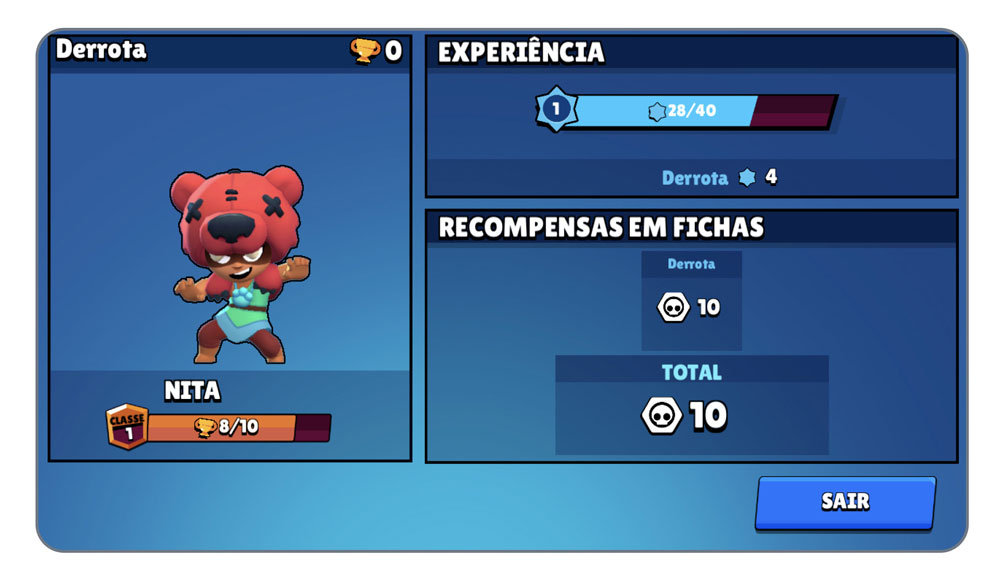
Brawl Stars (Supercell)
- Certain items (videos, avatar items, resources – e.g. tips – in games) can be purchased with coins acquired in games.
- Achievements are merits given for accomplishing some feat. When achieved, new items are unlocked or the player receives coin rewards.
Games within creator's lore

Cube Escape (Rusty Lake)
- The player is encouraged to explore the mysterious scenario, discovering items that can help him get out of there.
- Possibility of involving characters and villains from Luccas Neto's world.
- The Escape Room adventure style is already explored by Luccas himself in some videos on the channel (e.g.: I got stuck in toy room).
Videos reactions
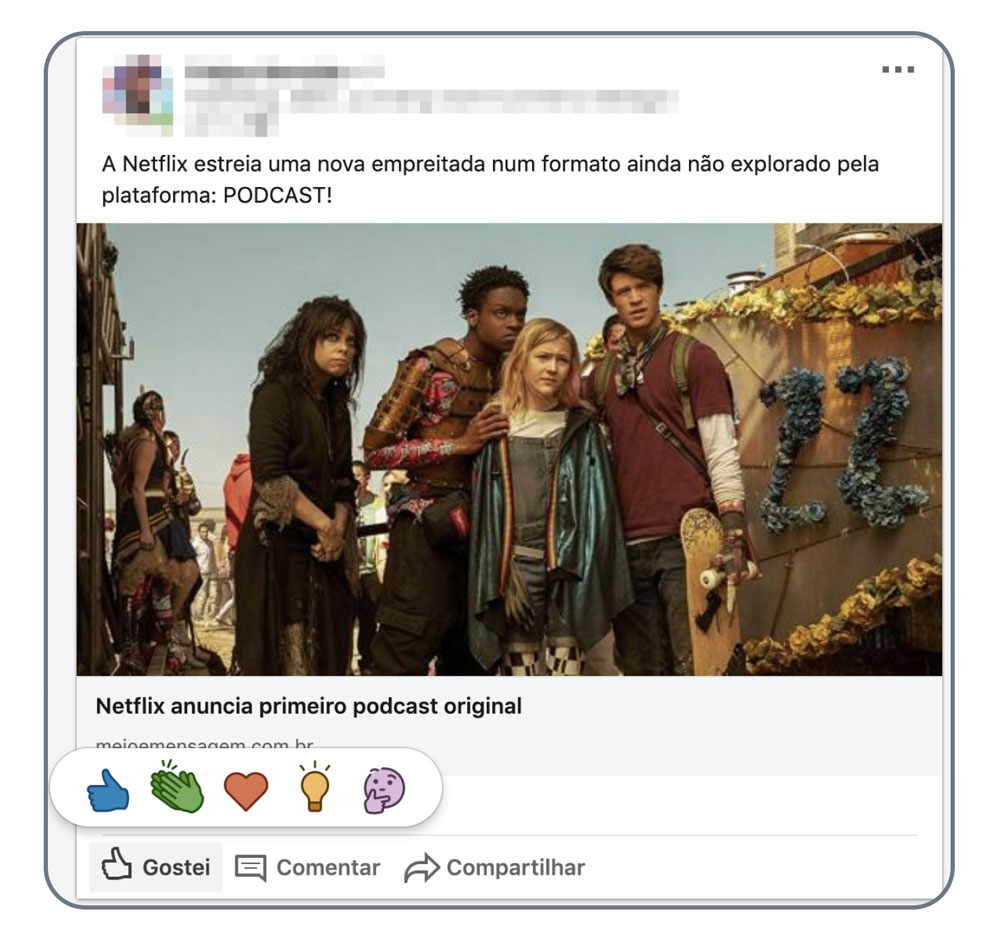
LinkedIn reactions (LinkedIn)
- In addition to watching the video, the child can express their emotion and see the reaction of other users.
- Video ratings can be used for personalized searches (laughable videos, musicals, etc.).
Prototyping and testing the ideas
Along with the developers, we coordinated the ideas in a "Effort x Impact" matrix to prioritize what would become part of the MVP.
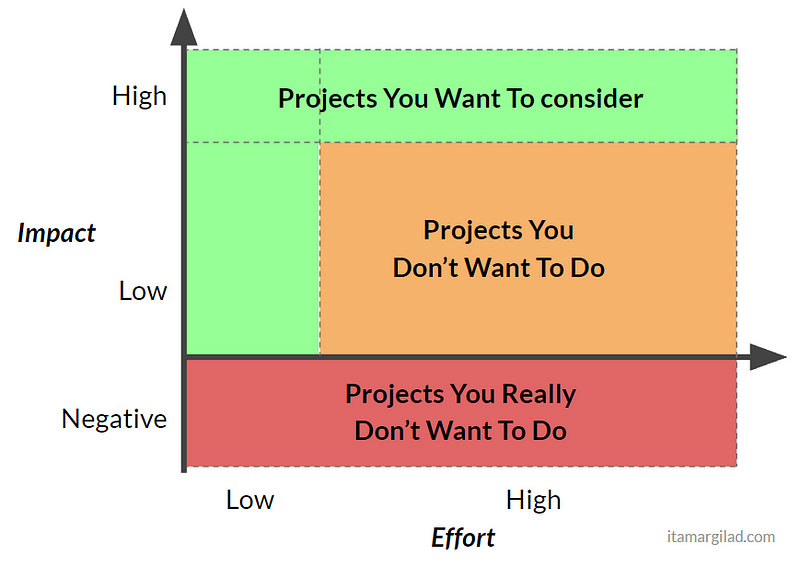
To test the concept with kids, we broke that down into small low-fi prototypes, each one dedicated to a main idea, allowing rapid iterations, low efforts and insignificant investment.
Avatar - Print mockups in paper
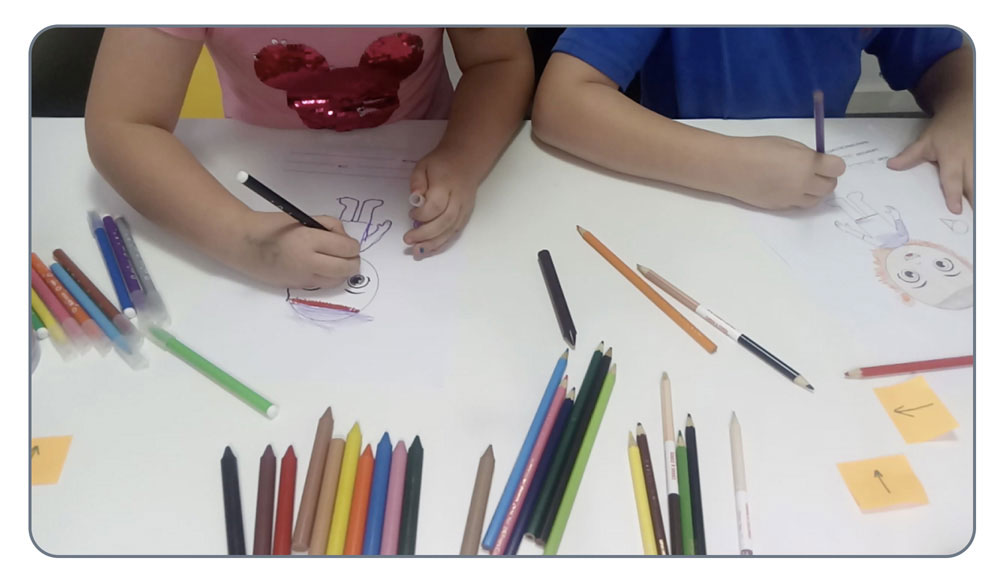
Children experimented with colors on a paper mockup. They see themselves as Adventurers – they already know their power, color and even their "transformation"!
In this stage, we hired a Visual Designer to create the mannequin and start designing the MVP UI.
Super Video Player - Simple version
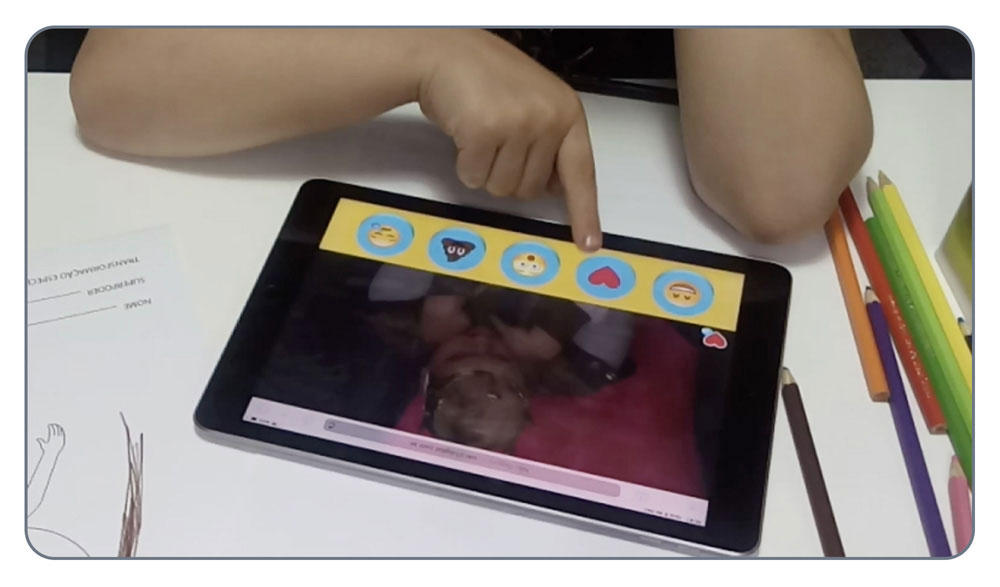
Using a prototype based in HTML (which I loved to do!), it was possible to carry out a simulation of the Super Player feature (video player with real-time reactions).
Children demonstrate their reaction to the videos, personalizing your experience on the app – comedy (funny), scare, etc.
Game Escape Room (Toy Room)
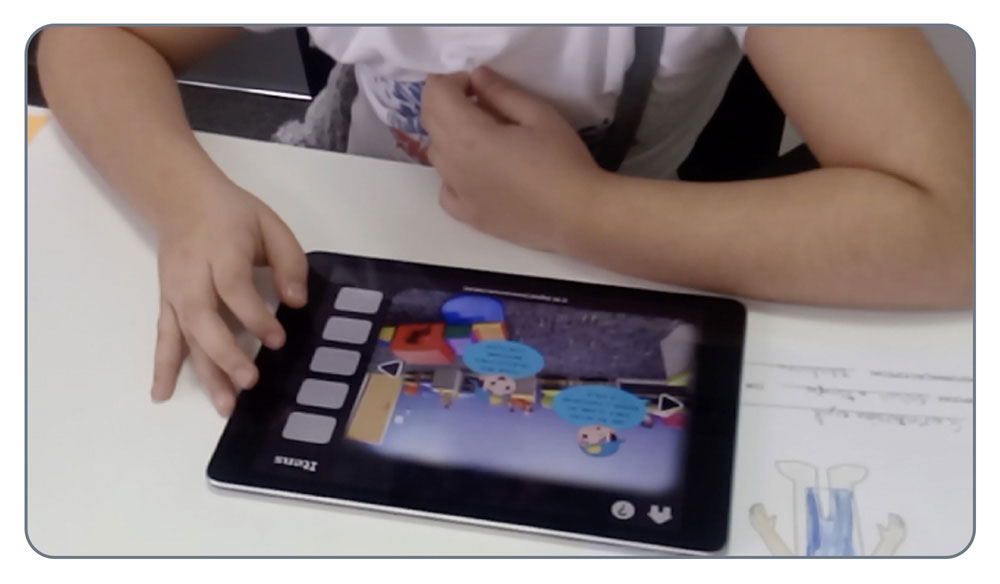
Using a low-fi prototype in Figma, it was possible to simulate the game Escape Room.
Very positive impressions. Children found it amusing that the "reactions" to the objects in the room were "narrated" by Luccas.
Point of attention: children in literacy phase make exclusive use of icons and audio (make accessible).
Profile (Achievements) and Subscriptions
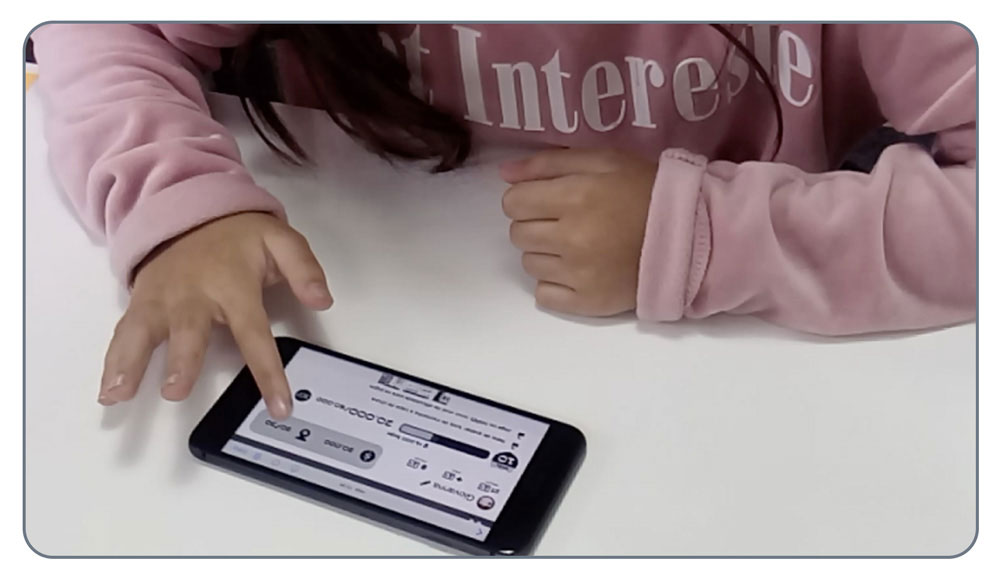
Using a static wireframe in Figma, it was possible to evaluate children's and mothers' perception of the app's Achievements and Economy feature.
Using coins and acquiring new items is a constant stimulus and challenge to keep children engaged.
Moms: Premium mode is advantageous for the extra coins, they would use it in free mode to test the app. Advertising on videos is not a problem because children are already used to it.
Reviewing the Concept
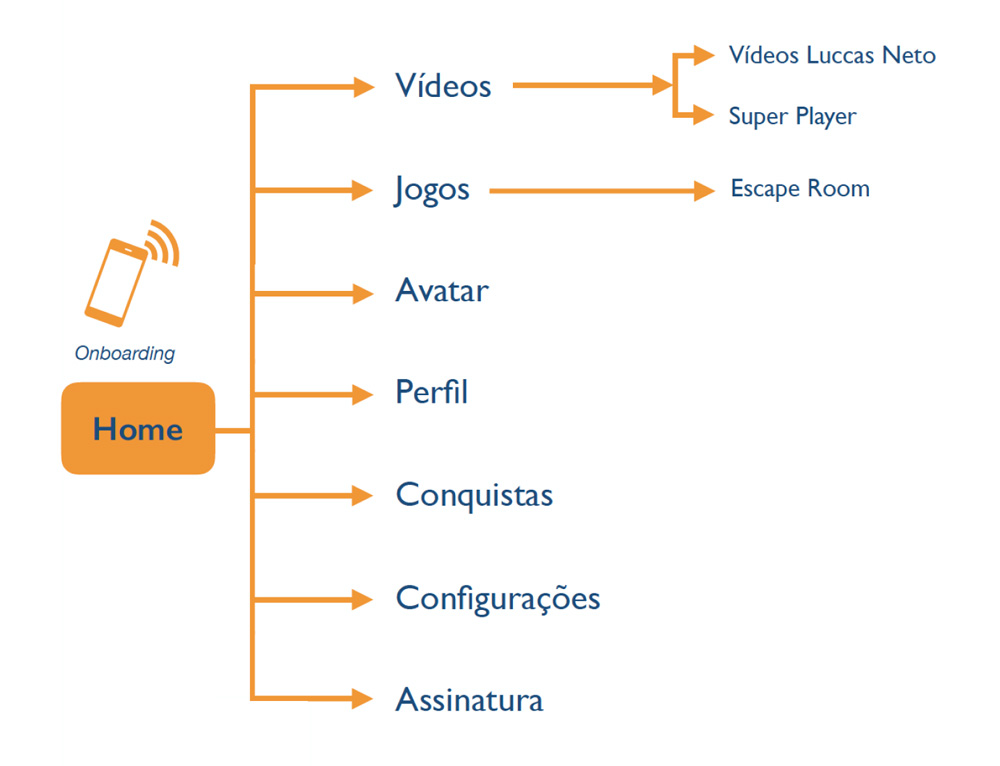
The ideas were in the table and a first navigation flow was created. However, it still needed something that would connect all the parts in a cohesive way.
I decided to embrace "The Adventurers" and bring its universe to the meta layer. It would give support to the storytelling: the user gets a call from the creator, a call to be a new Adventurer and they are invited to choose a "Power Stone" and put it to enable the navigation menu so they can start navigating within the app.
Some of the first sketches
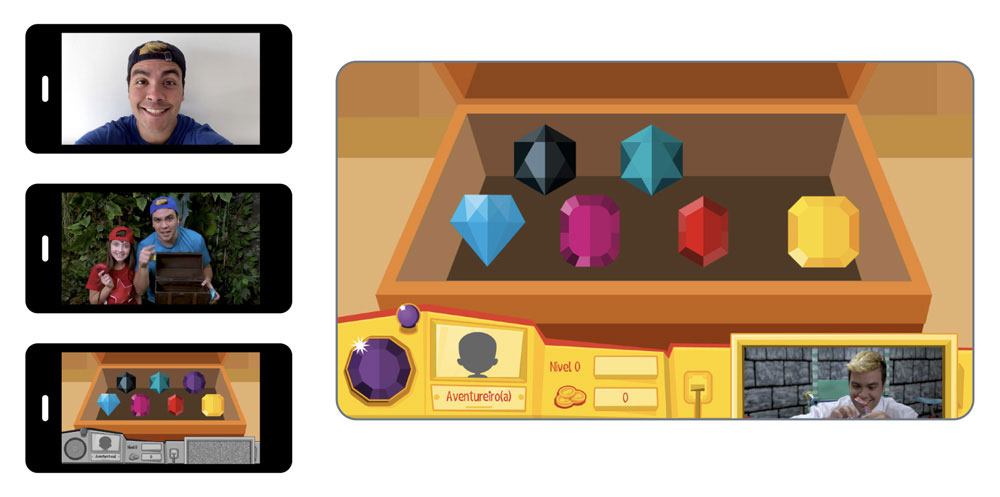

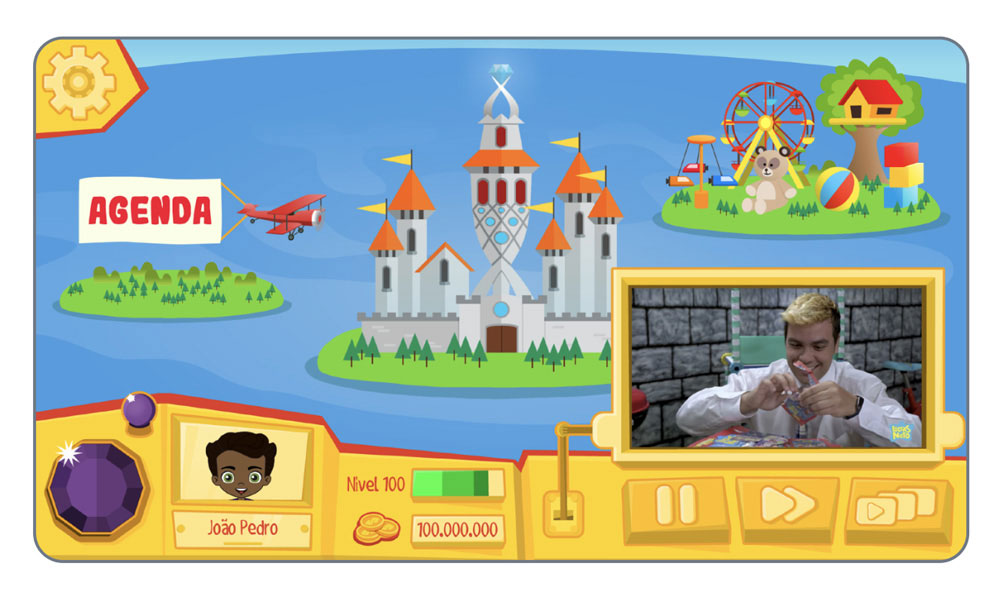


Not compelling, but a beginning.
Converging all to MVP and testing it
After two months, we finished the design stage with client approval, did the handoff and took more ten months to develop the app's first version. Has come the moment to test all the concept on its whole before official launching.
Test goals
- Analyze general experience of using the app (first time we presented the entire app to children)
- Detect usability issues to fix before launch
- Insights and improvements for the future
- Check corrections made in internal quality tests
Method: a remote and assisted usability test. Sample with 9 children aged 5 to 11 years and who were fans of Luccas Neto.
Usability Test Results
Onboarding
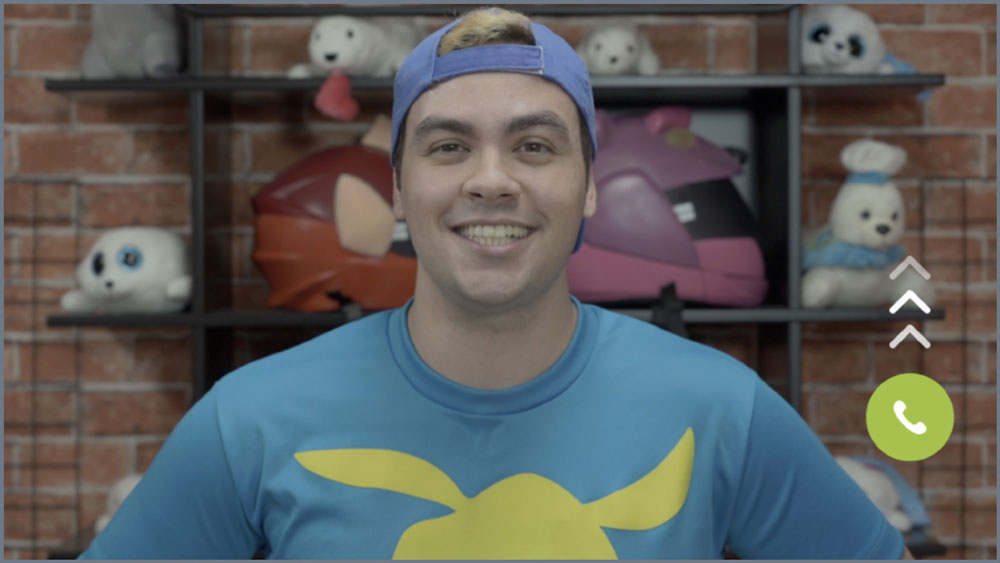
- Younger children thought it was a REAL call from Luccas Neto
- All children: extremely positive reaction
- They keep the information spoken by Luccas (pay close attention), opportunity for future videos onboarding features
Videos
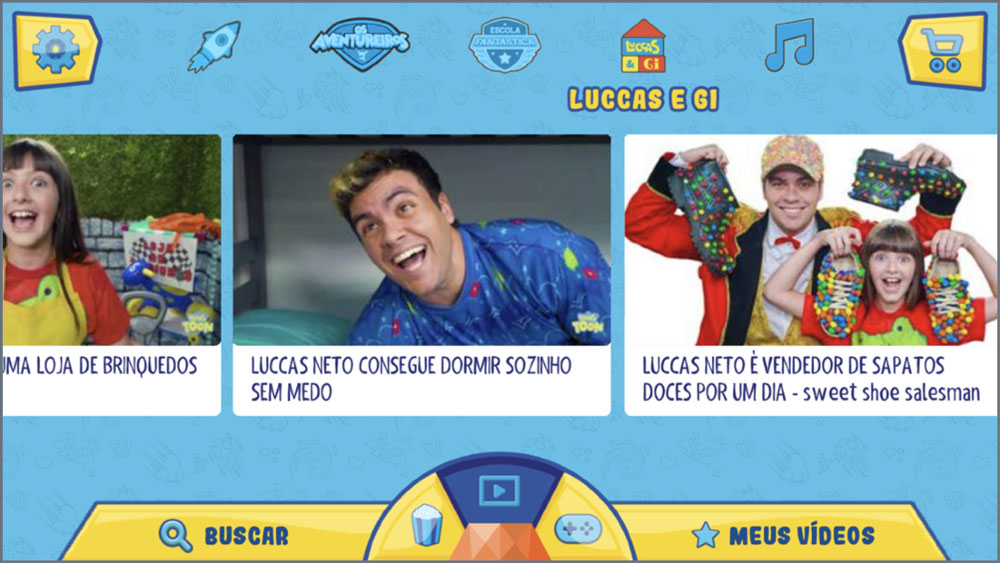
- "My videos" tab: not used. They identify the star icon during viewing as the You Tube "like"
- Search optimization: children use it as if it were YouTube search (they typed "Luccas Neto", for example)
- They didn't use Reacts spontaneously, but they liked it when asked to try it
Avatar
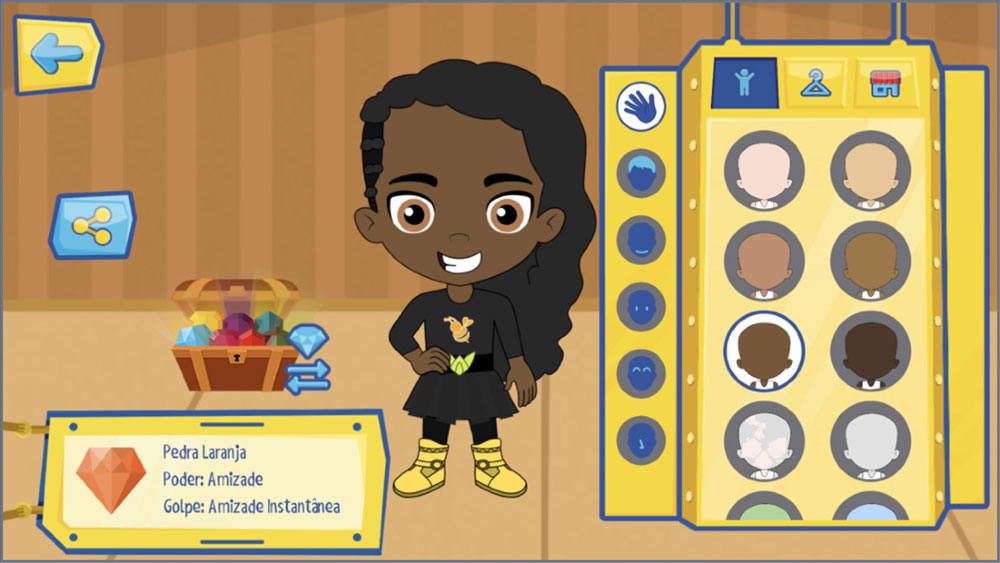
- Main uses: making characters that already exist in the Luccas Toon universe, and making their own version
- Difficulty selecting the color of clothes (touch area) and removing accessories
- Share button was not identified
- Changing stones: intuitive flow once the child is already inside the Avatar
Escape Room
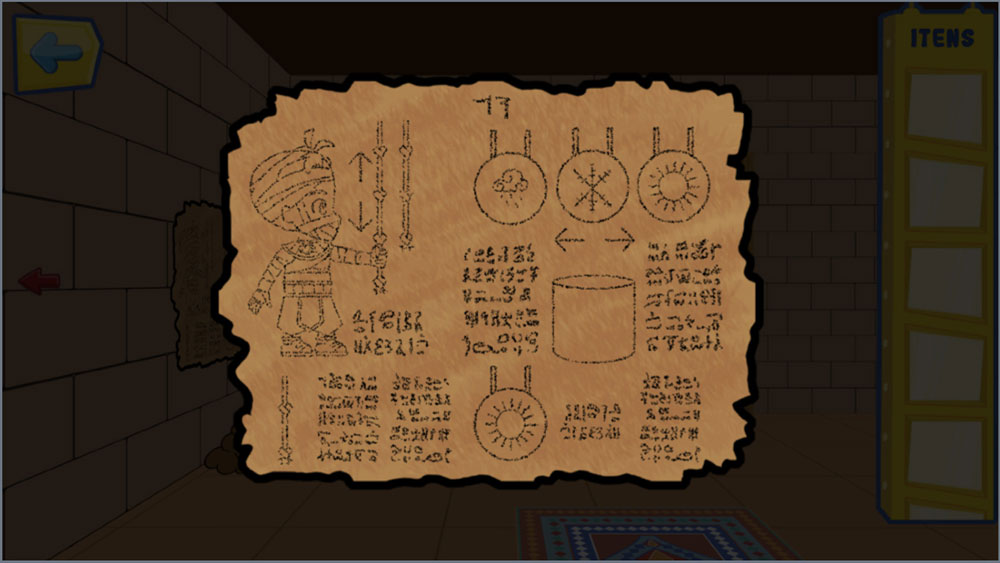
- Drawing on the wall and position of symbols: use of literal reference, they expect the resolution to be leaving the items exactly as they are in the drawing
- Difficulty controlling the strings
- Customize character responses to interactions/puzzles already solved
Home - Games Section
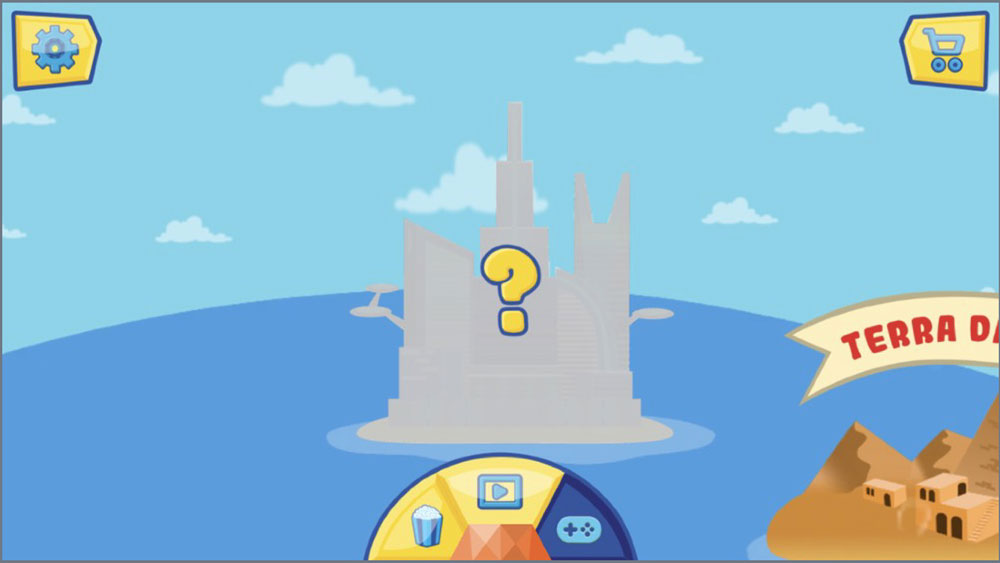
- Video game controller icon is very effective in communicating that this section has games
- Explore touch gestures on islands to navigate
- Gray islands: children don't understand why they are inaccessible
Test Insights
- They look for free alternatives or stop using the feature when it is paid
- More features "using" the Avatar
- Online/collaborative games
- Games with slime and dinosaurs
Monetization
This part was developed along with the new business director and the CTO.
In order to build consistent revenue, we created a composition with video ads (Google Admob), inapps purchase and subscription.
MVP Release
The app reached over 600k downloads within the first month of release and scored a rating of 4.3 stars within the first quarter.
Yes, we killed the bear!
And then... what was next?
We took almost one year to develop the app and we've been implementing new solutions since its first release, such as:
- New UI Design and Design System
- More games using Luccas Neto universe with ready-made engines (e.g.: Candy Crush)
- New inapps and subscription enhancement: exclusive content, coin multiplier and discounts for app subscribers
My takeaways
There was so many lessons learned with this project and I will highlight three of them:
- Never despair. Don't know what to do? Turn off the light and start groping the wall.
- When assigning a task that requires a specific skill to a designer, don't expect too much from that designer if they don't have that specific skill proven. Even though they say they will deliver it. For example: Illustration is not UI Design.
- In two years, Luccas' return on investment was five times higher. But we noticed that the amount of inapps we created was insufficient for a high demand in the beginning. I should have dedicated more time to this subject of monetization.